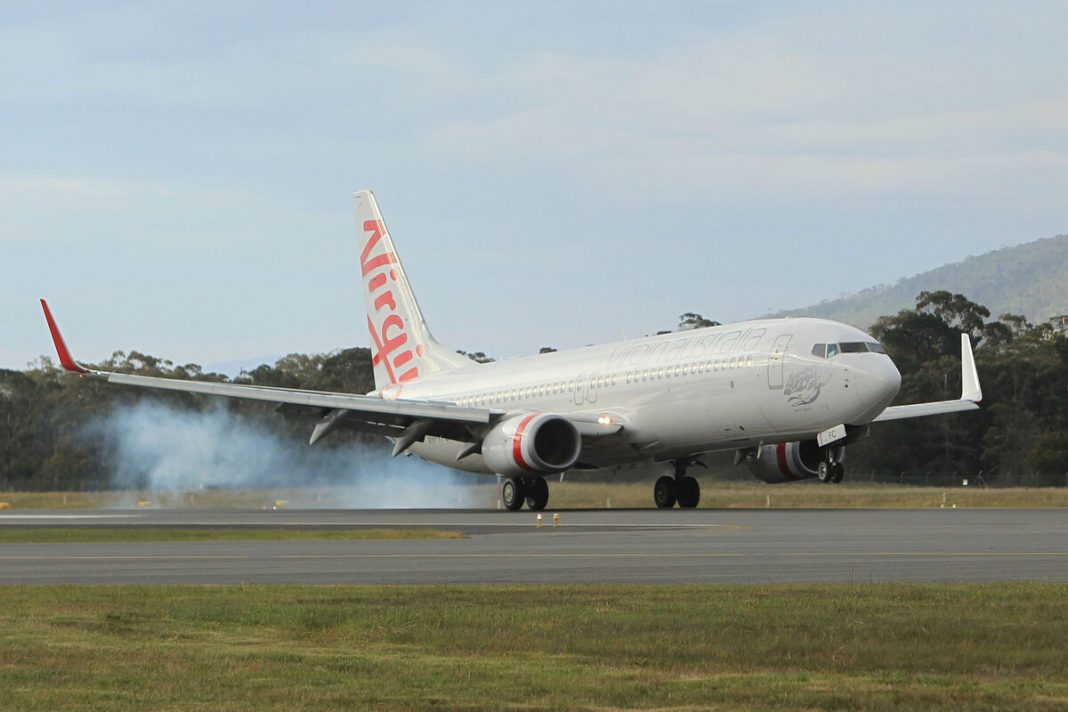2020 has been a challenging year for the aviation industry as a whole. As it comes to an end, airlines are beginning to consider how their operations may look in the short-term future. Virgin Australia is one such carrier that, having been struggling even before COVID-19, has a particularly cautious outlook.

Cautious in the short-term
Speaking yesterday in an interview at CAPA Live, Virgin Australia CEO Jayne Hrdlicka outlined the airline’s plans for the coming years. She took on the role in November following Paul Scurrah’s departure.
With international travel currently not a possibility for Australian passengers, its domestic market is set to grow. However, Virgin Australia is cautious about its finances in the short-term, and will focus more on building for its future, rather than explicitly looking to make money. Hrdlicka expects many airlines to be in this position, stating that:
“Nobody’s trying to make a lot of money in the first 18 months or the first two years. We’re trying to build the business for the long term. So, of course, we very mindful of making good, prudent financial decisions.”

Changes to the domestic market
The increasing prominence of REX will only fuel the aforementioned growth in Australia’s domestic market. Particularly important for the three main competitors (the other two being Qantas and Virgin Australia) will be the Melbourne-Brisbane-Sydney triangle. Before the pandemic, these routes accounted for 40% of Australian domestic traffic.
However, Virgin Australia remains confident in retaining its existing domestic market share of 33-34%. Despite the upcoming increased levels of competition, Hrdlicka believes that:
“I don’t even think you could put the two [REX and Virgin Australia] in the same conversation, frankly. There’s lots of data to back that up.”
The leisure sector of the Australian domestic market, in particular, is set to recover well. With this in mind, Virgin Australia will aim to cater to the mid-market, offering high service levels at affordable prices for all passenger types. Hrdlicka cited American carrier JetBlue as a particular inspiration for this model.

Fleet restructuring
Virgin Australia has also adapted by making changes to its fleet. In terms of incoming aircraft, it has halved its Boeing 737 MAX order. The arrival of these aircraft has also been pushed back by a year, to 2023. Hrdlicka underlined the fact that the airline does not intend to fully rely on these aircraft for its international operations going forward. She stated:
“You can’t look to the MAX 10 to fill out your international network. It will do a great job for us transcontinental, it will do a great job for us in more traditional short-haul international routes.”
The carrier’s widebody aircraft also seem unlikely to re-enter service particularly imminently. Virgin Australia had previously operated four Boeing 777-300ER and six Airbus A330-200 aircraft. However, 2020 saw all of these placed into storage.

Even before the pandemic struck, some of the airline’s long-haul routes were struggling, despite a favorable onboard product. As such, most of the airline’s international flight crews have since been laid off. Regarding the future of its widebody fleet, Hrdlicka stated:
“We won’t go straight back to widebody flying in the next 18-24 months. (…) But we know who’s first in if, well, not if, but when we get to a point where we’re starting to really accelerate narrowbody growth and widebody growth. We know exactly where we’re going.”
On the whole, it will be interesting to see how Virgin Australia performs over the coming years. Despite the challenges it faces, there certainly is a lot to look forward to.
What do you think about Virgin Australia’s rebuilding strategy for the coming years? Let us know your thoughts in the comments.
[ad_2]
Source link


